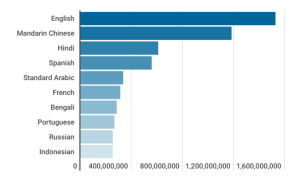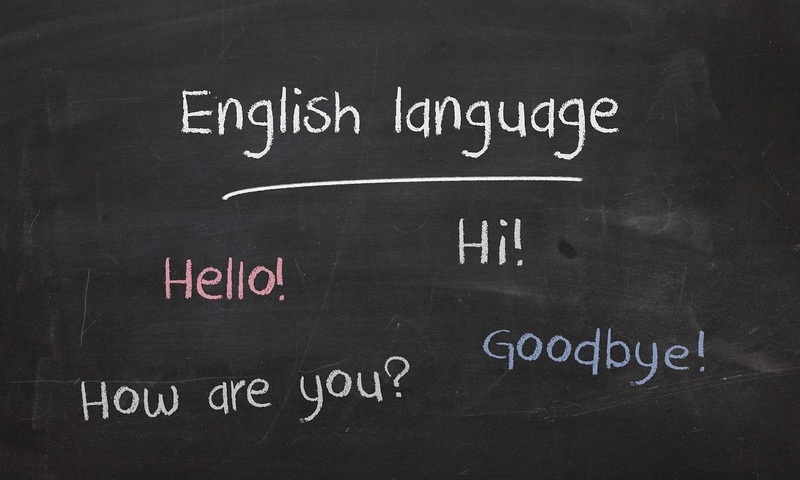A recent study published by Ethnologue sheds light on the world’s most spoken languages, revealing the unique position of English as a dominant language not primarily due to its native speaker population but its widespread adoption as a second language. The findings underscore the impact of globalization and institutional support on language diffusion, while also drawing attention to the urgent need for endangered language preservation.
According to Ethnologue’s data for 2025, English boasts the largest overall number of speakers globally. However, a striking statistic reveals that only one in four English speakers, approximately 380 million people, learn it as their first language. The vast majority, around 1.14 billion individuals, acquire English for purposes such as business, education, or entertainment. This 75% share of second-language speakers highlights the pervasive influence of institutions ranging from universities to social media platforms in expanding English’s global footprint. The proficiency in English often unlocks global opportunities, creating a self-reinforcing demand for its acquisition.
In contrast, Mandarin Chinese, while having a substantial 990 million first-language speakers, sees a significantly smaller percentage (16%) of its total speakers learning it as a second language. This reflects China’s large population and the comparatively limited international spread of Mandarin. Spanish follows a similar pattern, with 87% of its 558 million speakers being native speakers, largely concentrated across Latin America and Spain. These figures emphasize that sheer population size, rather than extensive international adoption, anchors Mandarin and Spanish near the top of the list of most spoken languages.
Other languages featured in Ethnologue’s 2025 data illustrate diverse patterns of language distribution. Hindi (609 million speakers) and Bengali (284 million) highlight the demographic strength of South Asia. Urdu, with 246 million speakers, spans across Pakistan and India, as well as a significant global diaspora. These languages primarily thrive on their large native-speaking populations within specific geographic regions.
Interestingly, Swahili and Nigerian Pidgin showcase Africa’s linguistic dynamism. While each has fewer than 10 million first-language speakers, their total speaker numbers exceed 80 million due to their role as lingua francas in regional trade and media. This demonstrates how a language can become widely spoken as a secondary language due to its utility in communication across diverse linguistic groups within a region.

Languages with the most speakers. Graphic courtesy: Ethnologue.
The Ethnologue study also underscores the critical issue of endangered languages. These are languages that are at risk of falling out of use as their speakers die out or shift to speaking other languages. The loss of a language represents the loss of a unique cultural heritage, including traditional knowledge, history, and ways of understanding the world. Efforts to preserve endangered languages are vital for maintaining global linguistic diversity.
Examples of endangered languages can be found across the globe:
North America: Many Indigenous languages are at risk. For example, the Yuchi language, traditionally spoken by the Yuchi people in Oklahoma, has very few fluent speakers remaining. Similarly, many of the languages of the First Nations in Canada are endangered.
Asia: In the Andaman Islands of India, languages like Onge, spoken by the Onge people, are critically endangered, with a very small number of speakers. In Northeast Asia, the Ainu language, the language of the Ainu people of northern Japan, is also critically endangered.
Africa: The continent has a vast linguistic diversity, but many languages are at risk. For instance, the N|uu language, a Khoisan language spoken by the N|uu people in South Africa, has only a handful of elderly speakers left. In Nigeria, languages like Busuu, spoken in the Southern Cameroons, are on the verge of extinction.
The Pacific Islands: This region is a hotspot of linguistic diversity, but also of language endangerment. In Vanuatu, the Araki language, spoken on the small island of Araki, has very few speakers remaining. In Hawaii, the native Hawaiian language, spoken by the Hawaiian people, is considered endangered, although there are revitalization efforts underway.
South America: The Amazon rainforest is home to a vast number of Indigenous languages, many of which are severely endangered. The Wachiperi language, spoken by the Wachiperi people in Peru, has very few speakers left. In Brazil, the Arikapú language, of the Arikapú people in Rondônia, is also critically endangered.
The data from Ethnologue serves as a crucial reminder of the complex dynamics of global language use. While English has established itself as a dominant second language, facilitating international communication and opportunity, the importance of maintaining linguistic diversity through the preservation of endangered languages remains a critical global concern. The ongoing efforts of linguists, cultural organizations, and communities themselves are essential to ensure that these languages and the rich cultural heritage they embody are not lost.
School blackboard. Photo credit: BiljaST from Pixabay.




Facebook Comments